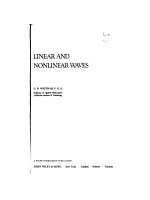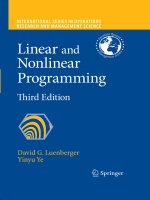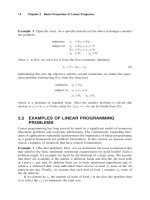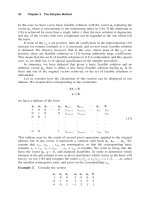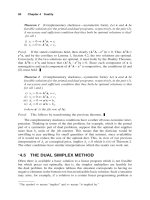LINEAR AND NONLINEAR REFRACTIVE INDEX CHANGES IN MONOLAYER MOSE2
Bạn đang xem bản rút gọn của tài liệu. Xem và tải ngay bản đầy đủ của tài liệu tại đây (581.37 KB, 6 trang )
<span class="text_page_counter">Trang 1</span><div class="page_container" data-page="1">
<b>LINEAR AND NONLINEAR REFRACTIVE INDEX CHANGES IN MONOLAYER MoSe2 </b>
<b><small>Tran Ngoc Bich</small><sup>1</sup><small>, Nguyen Ngoc Hieu</small><sup>2,3</sup><small>, Ta Thi Tho</small><sup>4</sup><small>, Le Thi Ngoc Tu</small><sup>5</sup><small>, and Huynh Vinh Phuc</small><sup>5* </sup></b>
<i><b><small>Keywords: Magnetic field, monolayer MoSe</small></b><small>2, refractive index changes.</small></i>
---
<b>ĐỘ THAY ĐỔI CHIẾT SUẤT TUYẾN TÍNH VÀ PHI TUYẾN </b>
<b><small>Trần Ngọc Bích1, Nguyễn Ngọc Hiếu2,3, Tạ Thị Thơ4, Lê Thị Ngọc Tú5</small></b>
<i><small>Khoa Sư phạm Khoa học tự nhiên, Trường Đại học Đồng Tháp </small></i>
<i><small>*Tác giả liên hệ: </small></i>
<i><b><small>Từ khóa: Từ trường, MoSe</small></b><small>2 đơn lớp, độ thay đổi chiết suất.</small></i>
<small>DOI: </small>
<small>Cite: Tran Ngoc Bich, Nguyen Ngoc Hieu, Ta Thi Tho, Le Thi Ngoc Tu, and Huynh Vinh Phuc. (2021). Linear and </small>
</div><span class="text_page_counter">Trang 2</span><div class="page_container" data-page="2"><b>1. Introduction </b>
Molybdenum diselenide (MoSe<small>2</small>) is an inorganic compound of Molybdenum (Mo) and selenium (Se) (Eftekhari, 2017), an interesting member of the Transition Metal
<i>Dichalcogenides (TMDCs) family (Kormányos et al., 2014, Hien et al., 2020). In the bulk </i>
form, the semiconducting MoSe<sub>2</sub> has an indirect bandgap, but it transfers to a direct bandgap in a monolayer layer. Besides, like other TMDCs materials, MoSe<small>2</small> has a strong spin-orbit coupling (SOC). This makes MoSe<sub>2</sub>possessing remarkable electronic and optical
<i>properties (Wang et al., 2012), and become a </i>
potential candidate for novel optoelectronic applications (Eda and Maier, 2013).
The refractive index changes have been studied widely in the quantum well (Yildirim and Tomak 2006) and in the layered materials
<i>(Nguyen et al., 2017, Nguyen et al., 2018, Huong et al., 2020). Yildirim and Tomak </i>
studied the linear and nonlinear changes in the refractive index of a GaAs Pöschl-Teller quantum well. Their results showed that the term as a consequence of the asymmetry of the potential in the expression for the nonlinear change is found to contribute negligible values to the nonlinear refractive index in comparison to the symmetry one (Yildirim and Tomak, 2006). On studying the linear and nonlinear magneto-optical properties of monolayer phosphorene,
<i>Nguyen et al. found that the RICs in </i>
phosphorene are strongly influenced by the magnetic field. Besides, their peaks appear in two different regimes: the microwave to THz and the visible frequency. The amplitude of intra-band transition peaks is larger than that of the inter-band transitions. The resonant peaks are blue-shifted with the magnetic field
<i>(Nguyen et al., 2017). Similar results have </i>
also been observed in the monolayer MoS<small>2</small>
<i>(Nguyen et al., 2018) and monolayer WS</i><small>2</small>
<i>(Huong et al., 2020). Accordingly, the RICs </i>
can be used as a useful tool to study the optical properties of the layered two-dimensional material such as MoSe<small>2</small>.
In this work, we study the linear, order nonlinear, and total refractive index changes (RICs) in monolayer MoSe<sub>2</sub> in a perpendicular magnetic field, using the expression in terms of single-particle eigenfunctions and eigenvalues of this material in the presence of the magnetic field. Using the density matrix theory, we calculate the RICs for both intra and inter-band transitions between the two bands. The effect of the magnetic, electric, and Zeeman fields on the RICs spectrum have been investigated quantitatively.
<b>third-2. Eigenfunctions and eigenvalues of the electron in monolayer MoSe<small>2</small></b>
We consider a MoSe<sub>2</sub> sheet oriented in the
<i>(xy) plane. When a uniform static magnetic field B is applied to the z-direction, the low-</i>
energy Hamiltonian of the system is given as
<i>follows (Hien et al., 2020) </i>
to the valley index (for K and K’), <i>s</i> 1 is for spinning up/down, <i><sub>i</sub></i> denotes the Pauli matrices (<i>i</i><i>x y z</i>, , )<i>, 2d is the distance </i>
between the Mo and Se sublattices, <i><sub>z</sub>eE<sub>z</sub></i>
with <i>E being the electric field applied to the <sub>z</sub>z-direction, </i> <i>peA</i> is the canonical momentum with <i>p</i> and <i>A</i> being the normal momentum and the vector potential, respectively. The Dirac mass and the offset
<i>energy expressions are (Catarina et al., 2019) </i>
</div><span class="text_page_counter">Trang 3</span><div class="page_container" data-page="3">Here, 0.74<sub> eV is the intrinsic </sub>
<i>band-gap (Xiao et al., 2012), the Zeeman fields are </i>
/ 2,
<i>M</i> <i>g</i> <i>B</i> with <i>i</i><i>s v</i>, corresponding to the spin and valley ones, <i><sub>B</sub></i> is the Bohr magneton, and <i>g<sub>i</sub></i> 2 <i>g<sub>i</sub></i><sup>'</sup> with <i>g<sub>s</sub></i><sup>'</sup> 0.29 and
the Hamiltonian shown in Eq. (1) have been
<i>presented by Hien et al. as follows (Hien et al., </i>
<i><small>n sn</small></i>
<i><small>zn sp</small></i>
<i><small>n s</small></i>
<i><small>n s</small></i>
<i><small>zn sp</small></i>
<i><small>n s</small></i>
<i><small>n s</small></i>
In the next subsection, we will use above
<b>equations to evaluate the RICs. </b>
<b>3. The refractive index changes </b>
To obtain the expressions for the RICs we need the expressions of the corresponding susceptibilities, using the compact density matrix approach, the linear and nonlinear optical susceptibilities for transitions between the two bands and ' to be calculated as
<i>follows (Huong et al., 2020) </i>
<i>E</i><sub> </sub> <i>E</i><sub></sub> <i>E</i><sub></sub>is the energy separation,
<small>0</small> <i>0.2 B</i>
<i>(meV) (Huong et al., 2020), and </i>
is the absorbed photon energy. From the expressions for the optical susceptibilities shown in Eqs. (8) and (9), we can find the
<i>RICs as follows (Rezaei et al., 2010) </i>
( )( , )
<i>where k = 1, 3 are for the linear and nonlinear </i>
terms, respectively, <i>I</i> 2<sub>0</sub><i>n c E<sub>r</sub></i> <sup>2</sup> is the
<i>intensity of the incident light with c = 3 x </i>
10<sup>8</sup><i> m/s being the speed of the light and n<sub>r </sub></i>= 4.25 is the refractive index of the MoSe<small>2</small><i> (Liu et al., 2014). </i>
<b>4. Numerical results and discussion </b>
In this section, we will evaluate numerically the linear, the third-order nonlinear, and the total RICs in monolayer MoSe<sub>2. </sub> The values of the parameters are displayed as they appear. The intensity of the
<i>light is I = 3 x 10</i><sup>6 </sup>W/m<sup>2</sup>.
</div><span class="text_page_counter">Trang 4</span><div class="page_container" data-page="4"><b><small>Figure 1. The linear RICs for intra-band transition is shown as a function of the photon energy at certain values of B and dΔz, for spin-</small></b>
<b><small>up and spin-down cases </small></b>
In Figure 1, the dependence of the linear RICs due to the intra-band transition on the photon energy is presented, including the effect of the spin and valley Zeeman fields. It exists only one absorption peak for each case of the spin. This result is in good agreement with that obtained in monolayer MoS<small>2</small>
<i>(Nguyen et al., 2018), WS</i><small>2 </small> <i>(Huong et al., 2020), and phosphorene (Nguyen et al., 2017). </i>
Because the SOC in monolayer MoSe<small>2</small> is strong, the peak positions due to spinning up and down are separated clearly with higher energy for the up-spinning case, but there is no difference between their intensities. Besides, the Zeeman field does not affect the peak positions but reduces their intensities. This result is also in agreement with that obtained in monolayer WS<small>2</small><i> (Huong et al., 2020). </i>
The effect of the electric field on the linear RICs in monolayer MoSe<small>2</small> is presented in Figure 2. When the electric field is taken into account, the intra-band transition RICs spectrum shifts towards the lower energy region and also reduces their intensities.
The dependence of the linear, third-order nonlinear, and the total RICs caused by the intra-band transitions on the photon energy is shown in <small>Figure 3</small><i> at certain values of B and dΔ<small>z</small>.</i> Since the nonlinear terms have the opposite sign in comparison to the linear ones, their contributions reduce the intensities of the
total RICs. This is in good agreement with that reported in the conventional semiconductors (Yildirim and Tomak, 2006) as well as in other
<i>layered two-dimensional materials (Nguyen et al., 2017, Nguyen et al., 2018, Huong et al., </i>
2020). Since the behavior of the RICs for up- and down-spinning cases are almost the same, in the following, we only evaluate the RICs for the up-spinning case but the results could be also validated for the down one.
<b><small>Figure 2. The linear RICs for intra-band transition including Zeeman fields are shown as a function of the photon energy at certain values of B and two different values of dΔz, for spin-up </small></b>
<b><small>and spin-down cases </small></b>
<b><small>Figure 3. The linear, third-order nonlinear, and the total RICs for intra-band transition including Zeeman fields are shown as a function </small></b>
<i><b><small>of the photon energy at B = 10 T, dΔz </small></b></i><b><small>= 51.25 meV, and for spin-up and spin-down cases</small></b>
In <small>Figure 4</small>, we depict the dependence of the linear, the third-order nonlinear, and the total RICs on the photon energy for several values of the magnetic field. The results are
</div><span class="text_page_counter">Trang 5</span><div class="page_container" data-page="5">evaluated for the up-spinning case, including
<i>the spin and valley Zeeman fields, and at dΔ<small>z </small></i>= 51.25 meV. It can be seen that when the magnetic field increases, the RICs spectrum shifts towards the higher region of the energy (blue-shift) and slightly reduces its intensity. This result is in good agreement with that reported in monolayer MoS<small>2</small><i> (Nguyen et al., </i>
2018), WS<sub>2 </sub> <i>(Huong et al., 2020), and phosphorene (Nguyen et al., 2017). The blue-</i>
shift behavior of the RICs spectrum can be explained by the increase of the cyclotron energy when the magnetic field increases.
<b><small>Figure 4. The linear, third-order nonlinear, and the total RICs for intra-band transition including Zeeman fields are shown as a function </small></b>
<i><b><small>of the photon energy at different values of B, </small></b></i>
<i><b><small>dΔz </small></b></i><b><small>= 51.25 meV, and for spin-up only. The solid, dashed, and dashed-dotted lines are for the linear, the third-order nonlinear, and the total </small></b>
<b><small>RICs, respectively</small></b>
<b><small>Figure 5. The linear, third-order nonlinear, and the total RICs for inter-band transition including Zeeman fields are shown as a function </small></b>
<i><b><small>of the photon energy at certain values of B, and </small></b></i>
<i><b><small>dΔz</small></b></i><b><small>, and for spin-up only</small></b>
In <small>Figure 5</small>, we present the dependence of the linear, the third-order nonlinear, and the total RICs for the inter-band transition on the photon energy. The results are evaluated for certain values of <i><small>B, and dΔz </small></i><small>including Zeeman fields </small><i>(i.e. M<sub>s</sub>, M<sub>v </sub>≠ 0). Unlike in the intra-band </i>
transiton cases, here we can see that the RICs due to the inter-band transition appear in a series of peaks at the near-infrared optical region with their intensities increase when the Landau Level increases, being in agreement with those reported in other layered two-
<i>dimensional materials (Nguyen et al., 2017, Nguyen et al., 2018, Huong et al., 2020). </i>
<b>Figure 6.<small> The linear, third-order nonlinear, and the total RICs for inter-band transition including Zeeman fields are shown as </small></b>
<b><small>a function of the photon energy at different </small></b>
<i><b><small>values of B, dΔz </small></b></i><b><small>= 0, and for spin-up only. The solid, dashed, and dashed-dotted lines are for the linear, the third-order nonlinear, and the </small></b>
<b><small>total RICs, respectively</small></b>
Figure 6 shows the variation of the RICs due to inter-band transition with the photon energy for different values of the magnetic field. Like the case of the intra-band transition (see <small>Figure 4</small>), here we also see that the increase of the magnetic field shifts the peaks of the RICs spectrum to the higher energy region as the result of an increase in the cyclotron energy when the magnetic field is enhanced.
<b>5. Conclusions </b>
We have studied the linear, the third-order nonlinear, and the total RICs in monolayer MoSe<sub>2</sub> in the presence of a perpendicular
</div><span class="text_page_counter">Trang 6</span><div class="page_container" data-page="6">magnetic field. The numerical results are evaluated including the combined effect of the electric and the Zeeman fields. With the strong SOC, the RICs spectrum in monolayer MoSe<small>2</small>
depends strongly on the spinning orientation of electron: the peak positions due to the up-spinning are located at the right-hand side of that due to the down-spinning one. The effect of the electric field on the RICs spectrum for the intra-band and the inter-band transitions is opposite. Meanwhile, the effects of the magnetic field are the same in both these two types of transitions. When the magnetic field increases, the peak positions in both intra- and inter-transitions always shift to the higher energy region. These interesting optical properties make monolayer WS<small>2</small> to be a potential candidate for useful application in optoelectronic devices.
<b>References </b>
Catarina, G., Have J., Fernández-Rossier, J. and Peres, N. M. (2019). Optical orientation with linearly polarized light in transition
<i>metal dichalcogenides. Physical Review B, </i>
<i>99(12), 125405.1-17. </i>
Ding, Y., Wang, Y., Ni J., Shi, L., Shi, S. and Tang, W. (2011). First principles study of structural, vibrational and electronic properties of graphene-like MX<small>2</small> (M= Mo, Nb, W, Ta; X= S,
<i>Se, Te) monolayers. Physica B: Condensed </i>
<i>dichalcogenides. Physical Review B, 101(4), </i>
045424.1-13.
Huong, P. T., Muoi, D., Bich, T. N., Phuc, H. V., Duque, C. A., Nguyen, P. T. N., Nguyen, C. V., Hieu, N. N. and Hoa, L. T.
(2020). Intra-and inter-band optical absorption in monolayer WS<small>2</small>.
<i>magneto-Physica E: Low-dimensional Systems and Nanostructures, 124, 114315.1-6. </i>
Kormányos, A., Zólyomi, V., Drummond, N. D. and Burkard, G. (2014). Spin-orbit coupling, quantum dots, and qubits in monolayer transition metal dichalcogenides.
<i>Physical Revview X, 4(1), 011034.1-16. </i>
Liu, H.-L., Shen, C.-C., Su, S.-H., Hsu, C.-L., Li, M.-Y. and Li, L.-J. (2014). Optical properties of monolayer transition metal dichalcogenides probed by spectroscopic ellipsometry. <i>Applied Physics Letters, 105(20), 201905.1-4. </i>
Nguyen, C. V., Hieu, N. N., Duque, C. A., Khoa, D. Q., Hieu, N. V., Tung, L. V. and Phuc, H. V. (2017). Linear and nonlinear magneto-optical properties of monolayer
<i>phosphorene. Journal of Applied Physics, </i>
<i>121(4), 045107.1-6. </i>
Nguyen, C. V., Hieu, N. N., Muoi, D., Duque, C. A., Feddi, E., Nguyen, H. V., Phuong, L. T., Hoi, B. D. and Phuc, H. V. (2018). Linear and nonlinear magneto-optical properties of monolayer MoS<small>2</small><i>. Journal of Applied </i>
<i>Physics, 123(3), 034301.1-7. </i>
Rezaei, G., Karimi, M. and Keshavarz, A. (2010). Excitonic effects on the nonlinear intersubband optical properties of a semi-parabolic one-dimensional quantum dot.
<i>Physica E: Low-dimensional Systems and Nanostructures, 43(1), 475-481. </i>
Wang, Q. H., Kalantar-Zadeh, K., Kis, A., Coleman, J. N. and Strano, M. S. (2012). Electronics and optoelectronics of two-dimensional transition metal
<i>dichalcogenides. Nature nanotechnology, </i>
<i>7(11), 699-712. </i>
Xiao, D., Liu, G.-B., Feng, W., Xu X. and Yao, W. (2012). Coupled Spin and Valley Physics in Monolayers of MoS<small>2</small> and Other Group-VI Dichalcogenides. <i>Physical Review Letters, 108(19), 196802.1-5. </i>
Yildirim, H. and Tomak, M. (2006). dependent refractive index of a Pöschl-
<i>Intensity-Teller quantum well. Journal of Applied </i>
<i>Physics, 99(9), 093103.1-5.</i>
</div>
